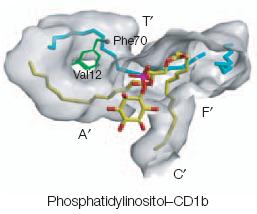Media reports
"More Options to Answer 'What About the Kids?'" by NYT's Mireya Navarro, 11/27/2005,
The shift to more equitable custody arrangements over the last decades, a reflection of the changing role of fathers, has propelled many couples into more contentious divorce proceedings, as they fight over equal time with their children, some divorce lawyers say. Yet the resulting financial and emotional toll of protracted litigation is at the same time creating a powerful incentive for many separating couples to look for ways to agree.
The
OurFamilyWizard.com web site is mentioned. This is basically a secure community site encompassing otherwise common tools such as group calendars, message boards, file storage space, etc, but specifically designed for divorced families. This web site received a lot of media coverage some years ago.
"The things that are difficult to discuss - who gets the kids when, who owes who money - that's handled electronically" ... "The kids don't have to listen to talk about all that. Our conversations are focused on the kids. They're about the school conference or Christmas."
Navarro talks about the
"bird-nesting" custody arrangement, in which the family's original residence is kept while the 2 parents take turns live in with the kids.
The couple keep most of their belongings and receive mail at their old address. They switch off stays under certain rules: each will leave the house tidy, each is responsible for his or her own groceries, and neither will bring dates. Mr. Bowerman said the arrangement "makes it more difficult" for both parents "because you don't get closure."
But he added, "Right now I see it as the best thing for the kids."
San Francisco Chronicle's Adair Lara writes
on bird-nesting,
By all reports, birdnesting requires so much tact and respect that onlookers wonder why, if they can pull this off, don't they stay married?
The kids are grateful... But when she visits friends, and sees their parents, Marie said, she missed not having two parents at home... Many experts worry that birdnesting kids will fantasize about their parents getting back together. "Parents need to remind their kids that's not in the future," said lawyer Sutton.
Pediatricians of children of divorce
One interesting thing of note in the OurFamilyWizard.com service is a tool to keep track of the children's medical records, in particular vaccination records. The
American Academy of Pediatrics Task Force on Medical Informatics has a
policy statement "Special Requirements for Electronic Medical Record Systems in Pediatrics". Specifically in the context of taking care of children of divorce,
- Data representation: growth data, parent identifiers.
- Data processing: pediatric dosage calculation (e.g. Dr. Jeremy Adler's Pocket-Doc) incorporated into computerized physician order entry; immunization records with decision support (e.g. how to make up for missed shots); automatically generate customized reports (e.g. shcool sports physicals, documents for family court)
- System design: distinction between biological parents vs legal guardians; ability to represent adopted children; links to other family members; links to registries (e.g. newborn screening, immunization)
Most recent statistics on divorce in America
Finally, some statistics. The popular number that many like to quote is that
"50% of all marriages end in divorce". However, this estimate is generated cross-sectionally. That is, (I believe), it looks at the number of divorces within a year and divides it by the number of marriages taking place that year. However,
while it is by construction a ratio, it is not a proportion, since it is really studying 2 different populations. More nuanced analyses are performed by demographers and we summarize some results here.
Based on
Cycle 5 of the National Survey of Family Growth (NSFG), collected in 1995, the CDC published a report in 2002 titled
Cohabitation, Marriage, Divorce, and Remarriage in the United States. By dividing marriages by the time period in which they start, i.e.
marriage cohorts, it found that for marriages starting in the 70s and 80s, the chance of divorce within 10 years is about 30%.
Now, broken down by duration of marrige, we note that the chance of divorce is almost constant, at an annual rate of about 4% per year. This cannot hold true of course, or else all marriages will end in 25 years. But we see no leveling in this graph.
There are some interesting findings on cohabitation. The chance of a cohabitation breaking up also appears to be constant, at about 6% per year.
... the chance of a cohabitation advancing into marriage yet again appears more or less constant, at about 7% per year.
Interesting.
Technorati Tags:
medicine / pediatrics / divorce / cohabitation / marriage / parenting



































 (Woo-suk Hwang)
(Woo-suk Hwang)
















